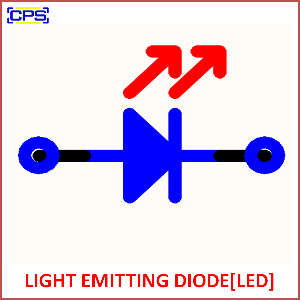A Light Emitting Diode (LED) is a semiconductor device that emits light when an electric current flows through it. The light is produced as electrons recombine with holes within the semiconductor material, releasing energy in the form of photons. LEDs are widely used in various applications due to their energy efficiency, long lifespan, and versatility.

Key Features of LEDs:
- Electroluminescence:
- The process by which LEDs emit light is called electroluminescence, where light is generated by the recombination of charge carriers (electrons and holes) in a semiconductor material.
- Directional Light:
- LEDs emit light in a specific direction, reducing energy waste compared to traditional light sources that emit light in all directions.
- Energy Efficiency:
- LEDs consume less power compared to incandescent and fluorescent light sources while providing equivalent or greater brightness.
- Compact Size:
- Their small size allows LEDs to be used in applications where space is limited.
- Durability:
- LEDs are robust and can withstand shocks, vibrations, and harsh conditions better than traditional light sources.
Construction:
- Semiconductor Material: Typically made of materials like gallium arsenide (GaAs) or gallium nitride (GaN).
- P-N Junction: The core of the LED is a p-n junction, where electrons and holes recombine to produce light.
- Lens/Enclosure: Encased in a protective lens that also helps focus the emitted light.
Applications:
- Lighting:
- Used in homes, offices, and outdoor settings for general illumination.
- Displays:
- Common in televisions, computer monitors, and digital signage.
- Indicators:
- Used as indicator lights in electronics and appliances.
- Automotive:
- Used in headlights, taillights, and dashboard displays.
- Specialized Uses:
- UV LEDs for sterilization, infrared LEDs for remote controls, and grow lights for plants.
Advantages:
- High energy efficiency.
- Long operational lifespan.
- Instant on/off operation.
- Environmentally friendly (no mercury or harmful gases).
Disadvantages:
- Higher initial cost compared to some traditional lighting options.
- Performance may degrade under high temperatures.
In summary, a Light Emitting Diode (LED) is a highly efficient, durable, and versatile light source that has revolutionized lighting and electronic display technologies.
